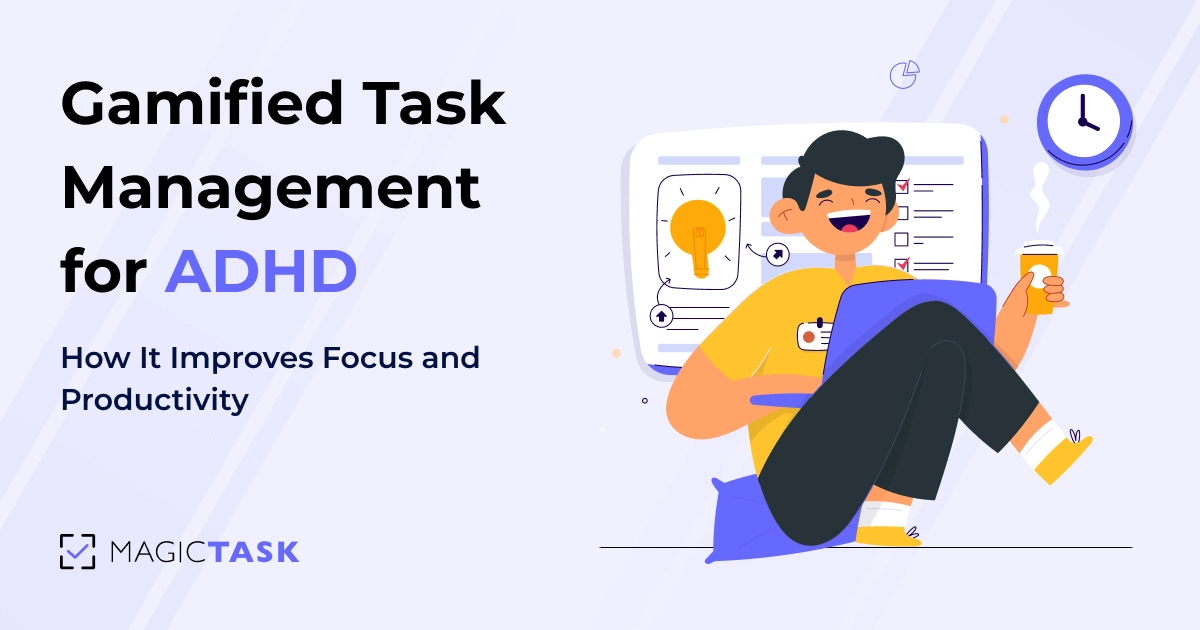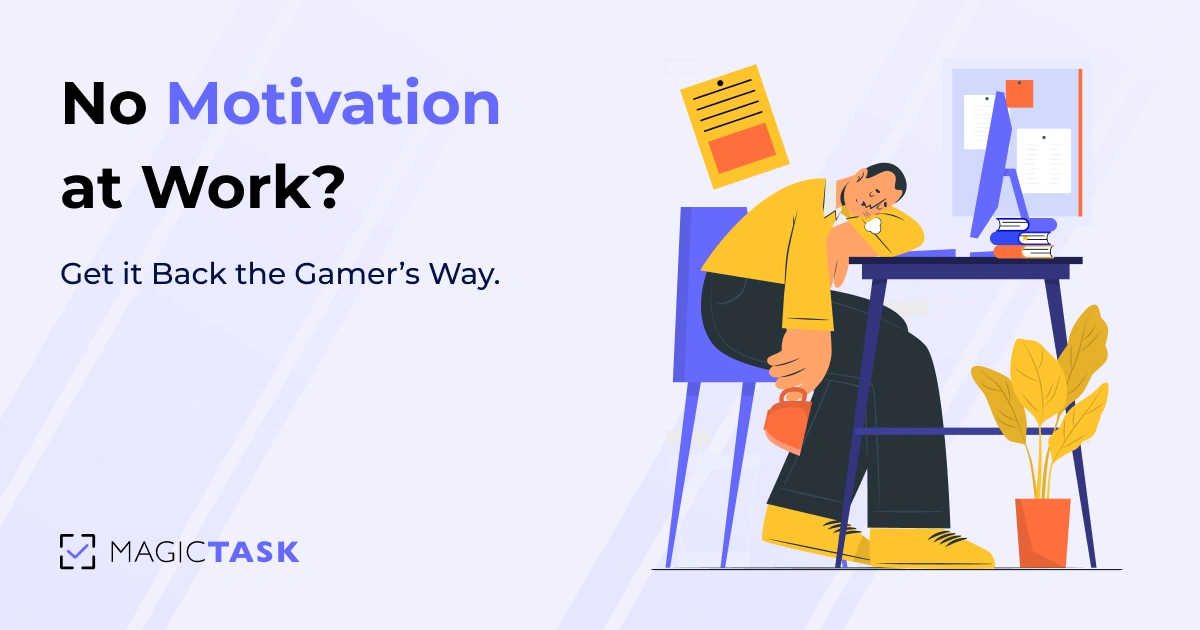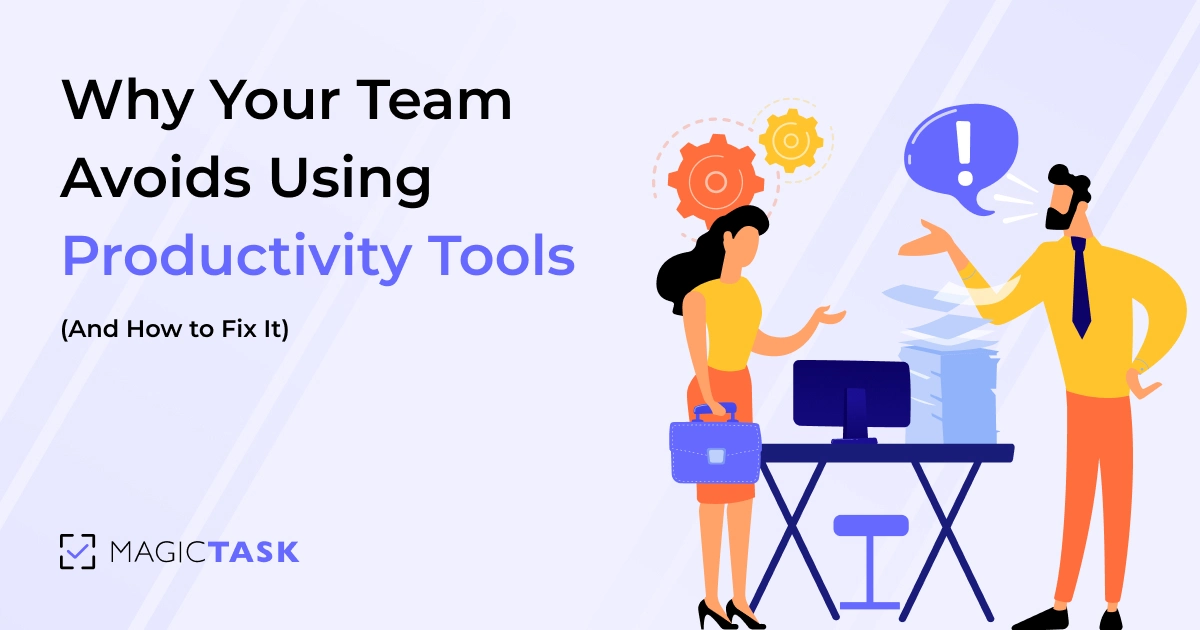25+ Amazing Productivity Statistics and Trends for 2022

From an employer's perspective, employee productivity is one of the biggest contributors to company profits. Every minute an employee is not working at their peak productivity, it costs the organization.
Because of this, most organizations make significant investments to improve employee productivity. Many organizations offer their employees mental health programs and the latest productivity tools and invest in creating the most productive environments for them.
Improved productivity results in faster deliveries, higher profits, and improved customer retention. and improved employee morale.
Here are 25+ productivity statistics that reiterate why employers should care about it and the key challenges to improving it. Some of these statistics also showcase employee perspectives on productivity and how organizations can work with it.
State of Employee Productivity
The last two years have seen a lot of changes in how and where employees work. The COVID-19 pandemic has brought about a dramatic shift in many companies’ operational styles. And as the pandemic appears to be over in many countries around the globe, organizations are building new modes of operation.
- 75% of global organizations are planning to invest in technology to improve productivity.
- 86% of employees prefer to work alone to be most productive compared to 27% that preferred an open office environment. (Source)
- Six out of ten workers felt more productive working from home than they expected it to be. (Source)
Many are considering new models of work, such as a 4-day work week and easing back into the office. Many organizations are also considering a hybrid model of work, hoping to gap the bridge between employees when working remotely. And to cope with these changes, organizations are investing in tools for improved communication and productivity.
- Productivity has improved by more than 61.8% from 1979 to 2020. (Source)
- The top-performing professionals are almost 8 times more productive than the average professional. (Source)
- The average worker works at the office for around 8 hours but is only productive for around 3 hours. (Source)
- Employees spend 32% of their time at work on social media. (Source)

Over the years, we have seen the average employee becoming more productive. But there’s still a huge gap between the top-performing workers and the average employee.
This showcases that there is room for improvement and that the average employee still spends a lot of time not being productive.
In fact, the average employee spends close to 60% of the time at the office not working. Social media continues to be a major contributor to employee distractions at the workplace.
- Being physically unwell or under stress can reduce employee productivity by around 77%. (Source)
Employers have understood the correlation between employee well-being and productivity. Many organizations invest in mental health programs and gym packages for their employees. They encourage their teams to take time off as required and be their most productive selves at the workplace.
Many employers offer subscriptions to apps for meditation and workouts and even buy fitness trackers for their employees.
When shifting to remote work, some organizations offered packages for employees to build a home office. They encouraged employees to get the best hardware for their workspaces and asked them to get comfortable desks and chairs to build a productive environment in their homes.
Employee Engagement Statistics
The last year has seen the emergence of the Great Resignation and ‘quite quitting.’ Employees are actively disengaging from their workplaces and often being just present.
Many employees felt they were not being adequately compensated or that they were not being valued. And this made them do just the bare minimum at work, instead of the traditionally seen “going over and beyond for the company” attitude.
- 15% of employees are actively disengaged at work, up from 14% in 2020. (Source)
- Only 21% of employees are actively engaged at work (Source)
And employers are losing out on profits because of this. Disengaged employees are costing employers to the tune of hundreds of billions of dollars globally every year. Globally only a very small portion of workers is actively engaged at work.
- A disengaged employee costs the company annually around 34% of its salary. (Source)
- Disengaged employees cost companies close to $500bn a year. (Source)
When an employee is actively pursuing organizational goals and putting their energy towards them, it helps the company reach its goals easily. Engaged employees are more productive and make the organization more profitable. Businesses with highly engaged employees are more likely to succeed than those without. They’re also proven to improve customer ratings and sales.
- A highly engaged workforce improves company profits by 21% and employee productivity by 17%. (Source)
- The businesses with the highest employee engagement are 2 to 5 times more likely to succeed than those with the lowest engagement rates. (Source)
- According to Harvard Business Review, 71% of business executives considered employee engagement as an important factor for business success. (Source)
- Employee engagement improves sales by around 18% and customer ratings by around 10%. (Source)
- An engaged force is 41% less likely to be absent from work and improves profitability by 23%. (Source)
Organizations need to invest more in solutions and initiatives that improve employee engagement. And researches and surveys have shown that instead of pizza parties or happy hours, employees value organizations that provide more regular benefits and better working conditions.
They value organizations that help them learn more and where they could best utilize their talents. Organizations can look into better benefits, improved communication within the organization, and other initiatives to empower and motivate employees.
When employees put more into their work, they demand more from their organizations - be that in the form of promotions or raises. Companies that recognize this and actively motivate their employees showcase high engagement and productivity.
Productivity Challenges and Its Solutions

Often the biggest challenge to productivity is often the environment. In many organizations, employees don’t have the right tools to do their jobs. Inefficient tools and lack of information slow down the employees and reduce their productivity.
- Employees spend almost 1.8 hours every day looking for information. (Source)
- Employees spend a total of 321 minutes at work looking at both their personal and work email. (Source)
In fact, an average employee spends a significant part of their day looking for information. This can be information related to the task at hand, or it could be information about the organization. Simply by making this information available, organizations can improve employee productivity.
For example, if you’re using a project management tool to assign tasks, ensure that every you include all the information they may need to perform that. This includes details regarding the deliverables, due dates, who they can work with, and other information.
- Executives often spend 23 hours a week in meetings. (Source)
- 34% of professionals in the US felt that poorly organized meetings are the biggest cost to their organization. (Source)
- Being interrupted at work costs workers up to 6 hours a day. (Source)
In a survey conducted by Slack, 69% of respondents said they were more productive when working asynchronously.
A common refrain that we hear in almost all organizations is, “this meeting could have been an email.” While meetings are necessary, we can all agree that we’ve all been in one too many unnecessary meetings. They take up time and energy and require everyone to be available at the same time. And it seriously brings down productivity.
- A 2022 study showed that 81% of employees felt more productive when they had flexibility over their working hours. (Source)
With a lot of organizations working remotely, the number of meetings has gone up significantly. And many organizations and productivity experts have been promoting async communication. The general idea of async communication is that if a meeting can be an email, make sure that it is. This allows employees and organizations more control over their time.
- According to McKinsey, automation solutions improve productivity by 0.8% to 1.4% annually. (Source)
Companies can also explore automation tools to improve employee productivity. Particularly in software development, IT, and project management, there are plenty of tools that can automate various tasks.
This will let employees focus on more important tasks without affecting the quality of the deliverables.
WFH and Remote Work Statistics

While there were companies that were completely remote even before the pandemic, COVID-19 made it absolutely necessary in many industries. And it completely changed the working environment for many professionals, quite possibly for years to come.
Changes during the pandemic revealed opportunities for improvement - some necessary, some for convenience - for both employees and employers. Many organizations are planning to extend these changes or completely rebuild their organizational culture around them.
- 16% of companies in the world are currently completely remote.
- 25% of all workers in the US are expected to be remote by end of 2023. (Source)
- 90% of employees claimed they were as productive from their homes as they were from the office, if not more. (Source)
- 55% of workers felt they spend more hours at work when remote. (Source)
Most studies and surveys show that employees were more productive working from home than they were at the office. There were fewer distractions, fewer people interrupting your work, fewer impromptu meetings, and therefore more time to focus on the task at hand. It also meant you could plan your breaks. But this is also often correlated with poor work-life balance when working remotely. Employees often reported being unable to disconnect from work.
- 70% of remote workers said it was difficult to be a part of the conversation during meetings. (Source)
The most commonly heard difficulty with the shift to remote work was the difficulty in communication. Team members often found it difficult to be on the same page when remote. Many organizations invested in better communication tools to improve this situation. And as mentioned earlier, many trained themselves in async communication.
- Almost 50% of the workforce would take a 5% pay cut to work part-time. (Source)
- At least 55% of the workforce wants to work from home at least three days a week. (Source)
- 70% of the workforce would consider forfeiting benefits like health insurance or PTO to maintain a remote work model. (Source)
This may be why most companies offer a hybrid work model for their employees. Employees get the benefits of working from home and can sync up with their teammates when they’re at the office. That said, a significant number of roles in the US are expected to be completely remote by the end of 2023.
As long as organizations invest in the right tech and empower their employees, productivity should remain at its peak, even when working in a remote or hybrid model.
Productivity is Profitable, but We Have to Work for It
Better productivity delivers better results in better time. From an organization’s perspective, improved productivity leads to better profits, better sales, and improved customer satisfaction. For an individual, it means they can focus on more important tasks and can find more value in their time.
But to be at their most productive selves, organizations must create the best environment for their employees. They must create an environment that motivates and encourages employees to engage more. And individuals have to invest in themselves; they have to figure out what works for them, what empowers them to focus more and use those techniques.



